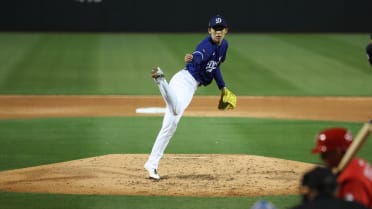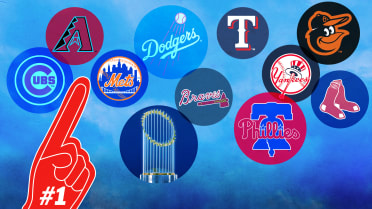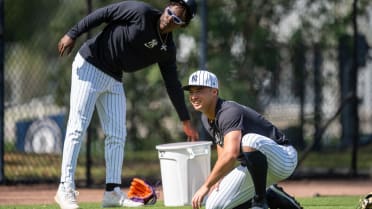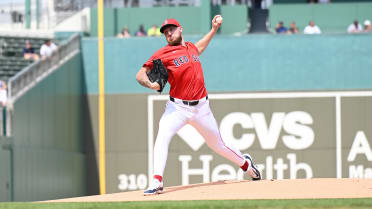Here is where Negro Leagues stars rank among the game's best
When Eric Chalek heard the news last winter that Major League Baseball was going to begin including Negro League numbers in the official record books, he had conflicted feelings.
As someone who has spent an inordinate amount of his spare time thinking about the Negro Leagues, Chalek -- a marketing director by day, a baseball blogger and analyst by night -- was ecstatic that the Negro Leagues from 1920 to 1948 would be recognized as comparable in quality to the segregated American and National leagues from that same time period. It was an overdue salute to those restricted to the Negro Leagues through no fault of their own.
But the 46-year-old Chalek also knew, from countless hours of experience, that incorporating the Negro League numbers into the Major League records is neither an easy nor an easily explainable task.
“We’re going to have to do a lot of education about what these numbers mean,” he thought to himself.
For many years now, Chalek has been trying to answer a question that is ultimately unanswerable:
How would Negro League players have performed in the AL and NL had they not been barred?
The results Chalek -- with the help of other like-minded researchers -- has come up with are by no means meant to be taken as baseball gospel. But they do give us a greater appreciation for Negro League greats like Oscar Charleston, Satchel Paige and Josh Gibson and a greater awareness of some lesser-known Negro Leaguers.
“It’s important that we recognize these players,” Chalek said. “They were heroes in their community, and they should be treasured and appreciated the way other ballplayers are.”
Back in the mid-1980s, the godfather of sabermetrics, Bill James, popularized the concept of Major League Equivalencies (MLEs) in his Baseball Abstract. MLEs are calculations that aim to estimate what a non-MLB performance would have looked like statistically within MLB.
For James at that time, MLEs were used to make sense of Minor League numbers, to guess how a player’s numbers at the Triple-A level would have translated to the big league level. But the same calculations can be made for numbers from the NCAA, the Japan Pacific League or other professional foreign leagues.
Sometime in the mid-2000s, Chalek decided to calculate MLEs for the Negro Leagues.
He had no idea how tall a task he had taken on.
While the Negro Leagues had talent comparable to the American and National Leagues, the differences between the two environments are substantial. The Negro Leagues had more variation in terms of the quality of play from league to league or team to team. The schedules were shorter than in the AL and NL, and the playing fields were much larger and therefore more pitcher-friendly. Even the ball itself was different. Rules were not enforced to prevent scuffing the ball, and there weren’t as many changes of the balls used during the games as in the AL and NL, meaning balls altered by dirt or spit or other substances stayed in play much longer.
“By the time the seventh inning rolled around, a guy was pitching with essentially a sweet potato,” Chalek joked.
To account for all these factors is mathematically impossible. But in first analyzing -- with a big assist from the wonderful Negro League stats database compiled by Seamheads -- how individual players performed relative to their Negro League peers and in their home parks, Chalek was able to make a basis for the translation to MLB numbers.
“It’s sort of like going from the metric system to the English system,” Chalek said. “You take that same relative distance from the average in another, and it allows you to get a sense of performance. And that’s really all we are after is an estimate.”
If you’re really, really interested in viewing and scrutinizing the mathematical methods Chalek used to reach his conclusions, you can find them here.
Most of us, though, are content to just skip to the good stuff. Chalek’s full database of Negro League MLEs can be downloaded here.
Chalek’s equivalencies are incomplete and always subject to change as researchers uncover more box scores and statistics from that era.
“We only have about two-thirds of Satchel Paige’s professional innings,” Chalek said. “There are still at least 1,000 innings out there that we have no idea about, from his time in the Cuban winter league, in Puerto Rico, missing box scores. So we’re going to keep learning. My goal is to keep updating as long as there are updates.”
But with the help of a bunch of passionate researchers -- including Gary Ashwill, Kevin Johnson and Scott Simkus of Seamheads, Larry Lester and the Society for American Baseball Research’s Negro Leagues Committee, researcher Kris Gardner, his one-time blogging partner Howard Miller, and the community at Baseball Think Factory’s Hall of Merit discussion board -- Chalek was able to piece together some compelling context for the Negro League numbers.
Here are a few noteworthy takeaways from the Negro League MLEs:
1) Smokey Joe Williams was a top-10 all-time pitcher.
Satchel Paige is the most famous pitcher in the history of the Negro Leagues, and the numbers we do have for his career are worthy of celebration. Chalek’s equivalencies give Paige a career wins above replacement mark of 95.8.
Williams, though, ranks first in WAR among Negro League pitchers, with a 103.3 pitching WAR. Using Baseball Reference’s data, that WAR mark would rank 10th all time among pitchers:
- Cy Young, 165.6
- Walter Johnson, 152.1
- Roger Clemens, 138.7
- Kid Nichols, 116.7
- Grover Cleveland Alexander, 116.0
- Lefty Grove, 113.3
- Tom Seaver, 106.1
- Greg Maddux, 104.8
- Randy Johnson, 103.5
- Joe Williams, 103.3
That would bump the legendary Christy Mathewson (100.4) out of the top 10.
So that’s added perspective about the mystique of Smokey Joe, who pitched 26 seasons in the Negro Leagues from 1907 to 1932 and was inducted into the Hall of Fame in 1999. Williams was matched up in exhibitions against the likes of Johnson and Alexander and was said by some to throw even harder than they did. Ty Cobb once said that Williams would have been a “sure 30-game winner” in the Major Leagues.
2) Oscar Charleston is an inner-circle Hall of Famer.
No Negro League position player has a higher WAR via Chalek’s equivalencies than Charleston, with a 98.4 mark. Charleston is well-known among those familiar with the Negro Leagues, and he is in the Hall of Fame (inducted in 1976). But his name is not as familiar to baseball fans, at large, as it ought to be.
The late Buck O’Neil, who will be belatedly inducted into the Hall of Fame this summer, once said of Charleston, “He was Ty Cobb, Babe Ruth and Tris Speaker rolled into one.” Charleston, who played from 1915-1944, was known for his combination of speed, power and contact, with a strong arm and superb defensive instincts.
These numbers back that up. Charleston’s projected 1.180 OPS in the 1924 season would have ranked in the top 50 individual outputs all time. And if these equivalencies counted as the real thing, Baseball Reference’s all-time center field WAR leaderboard would look a lot different, with Charleston and three other Negro Leaguers (listed here in italics) joining the top 10:
- Willie Mays, 156.1
- Ty Cobb, 151.4
- Tris Speaker, 134.8
- Mickey Mantle, 110.2
- Oscar Charleston, 98.4
- Turkey Stearnes, 85.2
- Bullet Rogan, 84.3
- Ken Griffey Jr., 83.8
- Pete Hill, 81.0
- Joe DiMaggio, 79.2
3) MLB could have had more two-way stars.
A certain Angels sensation named Shohei Ohtani has often been billed as the first two-way star since Babe Ruth. But that’s not true. The Negro Leagues had tons of two-way talents, including three in the Hall of Fame -- Bullet Rogan, Martín Dihigo and Leon Day.
Though there isn’t much data on Day as a position player to work with for these MLEs, the equivalencies do a great job of illustrating just how special Rogan and Dihigo were. Chalek said he did two sets of MLEs for each guy -- one as if he was a full-time position player and one as if he was a full-time pitcher.
“I did this because there really isn’t any strong precedent in MLB for players spending their entire careers playing both ways,” Chalek explained.
As you can see above, Rogan, as a full-time position player, would have ranked as one of the best center fielders of all time with an 84.3 career WAR. But as a full-time pitcher, the MLEs give him an also-robust 74.3 career WAR, which, for the sake of comparison, would rank just ahead of Tom Glavine (73.9).
Dihigo, meanwhile, is credited with a WAR of 70.7 as a full-time center fielder (just ahead of Carlos Beltrán at 70.1) and a WAR of 79.5 as a full-time pitcher (just behind Curt Schilling's 80.5).
Exactly how they would have fared in a hybrid role is impossible to know. But they certainly had the talent to try.
4) Heavy Johnson and John Beckwith are names we should know.
These were two of the names -- neither of which are in the Hall of Fame -- that Chalek cited when asked which players’ data surprised him the most. And in digging into the numbers, it’s easy to see why.
Oscar “Heavy” Johnson had a relatively short Negro League career, losing many of his prime years to military service. But he was a big, strong outfielder who powered the Kansas City Monarchs to the first pennants of what became a dynasty, and he won a Triple Crown in 1923. Chalek’s calculations give Johnson the equivalent of a 74.2 career WAR, which would rank 10th all time in right field, just behind Paul Waner (74.2) and just ahead of Reggie Jackson (73.9).
Beckwith, nicknamed “The Black Bomber,” was a shortstop who played from 1920-35. He routinely hit over .300 and also had big power. His 80.4 career WAR via these equivalencies ranks third among Negro League shortstops, and the two players ahead of him -- Pop Lloyd (95.2) and Willie Wells (93.4) -- are both in the Hall of Fame. An 80.4 WAR would rank ahead of the likes of Ozzie Smith (76.9) and Derek Jeter (71.3) in the shortstop rankings.
5) Hitters fared better than pitchers in the transition to the AL/NL.
This is an observation not just about these equivalences but also about the real-life adjustment for those who moved from one league to another in the wake of Jackie Robinson breaking the color barrier.
“There are basically four pitchers going from the Negro Leagues to the Major Leagues who were successful -- Connie Johnson, Don Newcombe, Satchel Paige and ‘Toothpick’ Sam Jones,” Chalek said. “The rest of them flopped. And they flopped in the Minor Leagues, as well.”
This can be attributed to those aforementioned differences in conditions with the ballparks and the baseballs. Pitchers in the Negro Leagues could survive on guile and durability without overpowering stuff.
“They probably didn’t separate pitchers and hitters the way we think of today,” Chalek said. “They took the best athletes and put them at the best positions -- shortstop, center field and catchers, then everybody else, with pitchers at the top of everybody else. They weren’t looking for blazing fastballs. The great athletes were already elsewhere on the diamond.”
This explains why only eight pitchers with career pitching WAR marks in Chalek’s equivalences that would have been high enough to rank in the top 100 all time -- the aforementioned Williams, Paige, Rogan and Dihigo, as well as Dick Redding (69.7), Ray Brown (53.9), Jose Mendez (58.5) and Rube Foster (51.0).
Anthony Castrovince has been a reporter for MLB.com since 2004.




